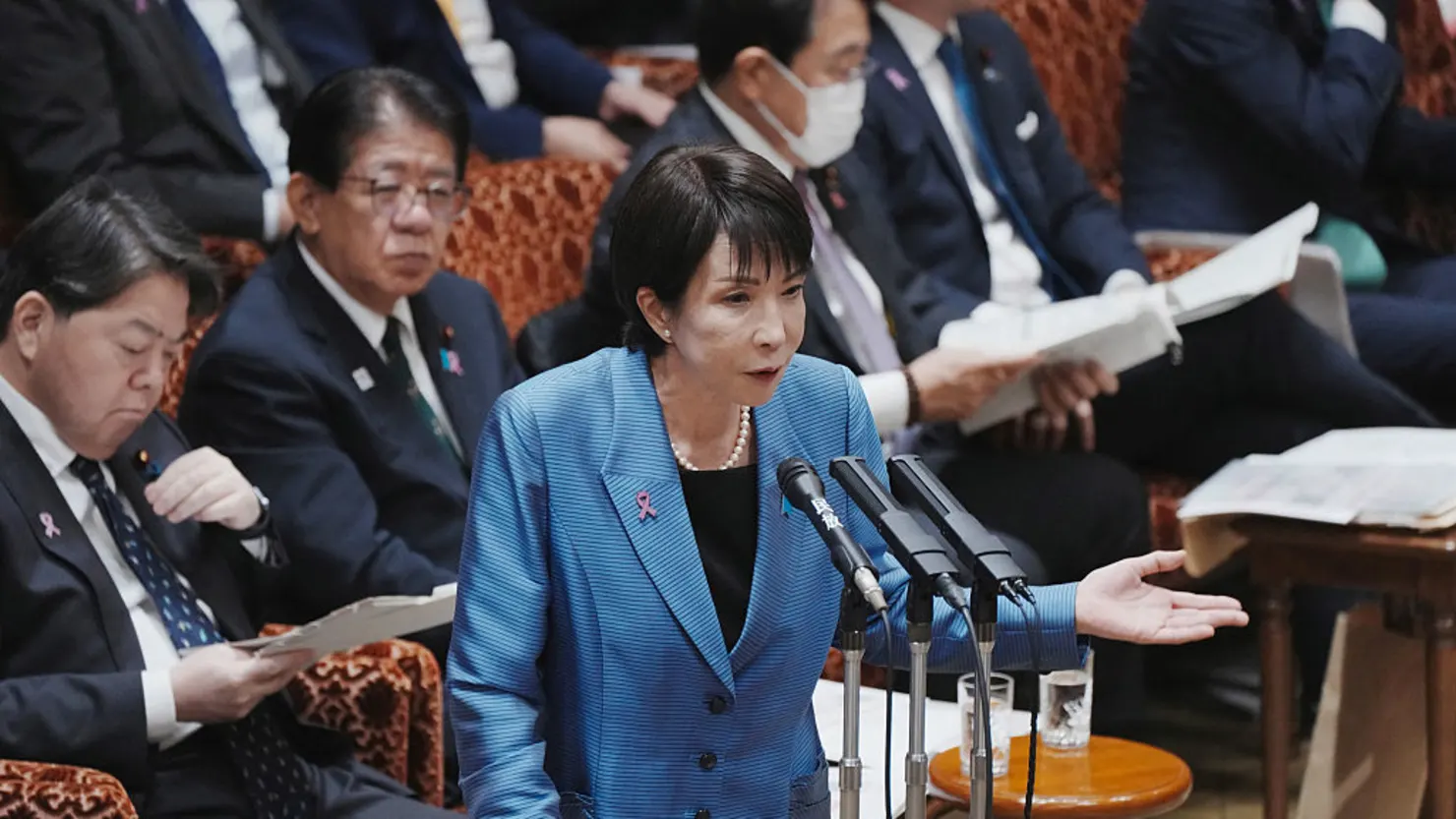Japan has just detonated a financial bombshell. In a move that stunned global markets and sent analysts scrambling for explanations, Prime Minister Sanae Takaichi unveiled a colossal 135.5 billion dollar stimulus package designed to rescue the country from rising prices, economic slowdown, and intensifying geopolitical pressure.
This is not a routine policy update. It’s the largest economic intervention since the Covid-19 pandemic—and it could reshape Japan’s future for the next decade. Here’s the full breakdown of what Japan just unleashed, why it matters, and why experts say the consequences could be massive.
Japan Unveils a 21.3 Trillion Yen Stimulus That Few Saw Coming
The Japanese cabinet approved a massive 21.3 trillion yen plan built around three dramatic goals:
- Fight soaring consumer prices
- Rebuild and strengthen Japan’s slowing economy
- Expand defense and diplomatic capabilities
This package is more than a financial bandage. It’s an aggressive, multi-front strategy signaling that Japan is preparing for a new era of economic and geopolitical uncertainty.
What’s Inside Japan’s Economic Shock Package?
A Lifeline for Families Hit by Inflation
Japanese households have been crushed by rising utility and fuel costs. The government is rolling out a wave of relief that includes:
- Expanded grants for local governments
- Subsidies for electricity and gas bills
- Support equivalent to 7,000 yen over three months for a typical household starting January
- A complete removal of gasoline taxes
This is one of the strongest consumer-support programs Japan has launched in over a decade.
A Bold Push to Revive Domestic Industries
Japan isn’t stopping at inflation relief. It’s also pumping money into long-term economic resilience. One standout move is the creation of a 10-year fund to rebuild and modernize Japan’s shipbuilding sector.
Shipbuilding is central to trade, national security, and manufacturing—making this investment a major strategic pivot.
Japan’s Defense Spending Is About to Surge
In one of the most dramatic shifts of the entire plan, Japan intends to raise defense spending to 2 percent of GDP by 2027. That level puts Japan on track to become one of the biggest defense spenders in the world.
This signals a new, more assertive era for Japan’s military posture, driven by escalating regional tensions.
Who’s Paying for All This?
Prime Minister Takaichi insists most of the package will be funded through government revenue, with the remainder covered by newly issued government bonds. She emphasized that bond issuance will be smaller than last year’s 42.1 trillion yen.
But many analysts doubt this will calm market fears, especially given Japan’s already enormous national debt.
Markets Immediately React — And Not in a Good Way
The bond market did not take the news quietly.
Japan’s benchmark 10-year government bond yield skyrocketed to 1.817 percent, the highest since the 2008 financial crisis, before easing slightly. The spike shows investors are worried that more debt is coming—and fast.
Jesper Koll of Monex Group warned that Takaichi’s aggressive spending could “spook” bond investors even further, raising the risk of continued sell-offs.
Higher yields mean higher borrowing costs, and that could complicate Japan’s entire strategy.
Political Tension Adds a Dangerous Twist
Japan’s political landscape is fragile. The ruling Liberal Democratic Party does not hold a majority on its own. It relies on the Japan Innovation Party, and together they control 231 seats—just two seats shy of a majority in Japan’s 465-seat Lower House.
Despite this, the government claims it will work with opposition parties to pass a supplementary budget before the end of the year. If negotiations stall, the entire package could be thrown into chaos.
What This Means for Japan’s Future
This isn’t just a stimulus package—it’s a massive gamble. And the stakes are enormous.
Could This Finally Slow Inflation?
Consumers will get immediate relief, but whether inflation actually eases depends on global energy markets and domestic demand. Japan is aiming for quick wins, but long-term stability is still uncertain.
Will the Economy Actually Recover?
If the shipbuilding fund and industry support pay off, Japan could see real economic momentum. But it requires rapid investment, stable markets, and strong consumer confidence.
Will Defense Spending Transform Japan?
Raising defense expenditure to 2 percent of GDP represents one of the biggest military shifts in modern Japanese history. It could redefine Japan’s position in Asia—and change alliances across the globe.
Could the Bond Market Become the Real Crisis?
If yields continue to rise, Japan could face higher borrowing costs that undermine the entire stimulus plan.
This could become the most important economic battle Japan fights in the next year.
Japan’s 135 billion dollar stimulus package is one of the boldest and riskiest moves the country has taken in years. It’s an attempt to fight inflation, revive economic growth, and strengthen national defense—all while navigating political uncertainty and financial market turbulence.
This plan could save Japan’s economy—or create a new crisis. Either way, the world is watching closely.

I am Aparna Sahu
Investment Specialist and Financial Writer
With 2 years of experience in the financial sector, Aparna brings a wealth of knowledge and insight to Investor Welcome. As an accomplished author and investment specialist, Aparna has a passion for demystifying complex financial concepts and empowering investors with actionable strategies. She has been featured in relevant publications, if any, and is dedicated to providing clear, evidence-based analysis that helps clients make informed investment decisions. Aparna holds a relevant degree or certification and is committed to staying ahead of market trends to deliver the most up-to-date advice.


